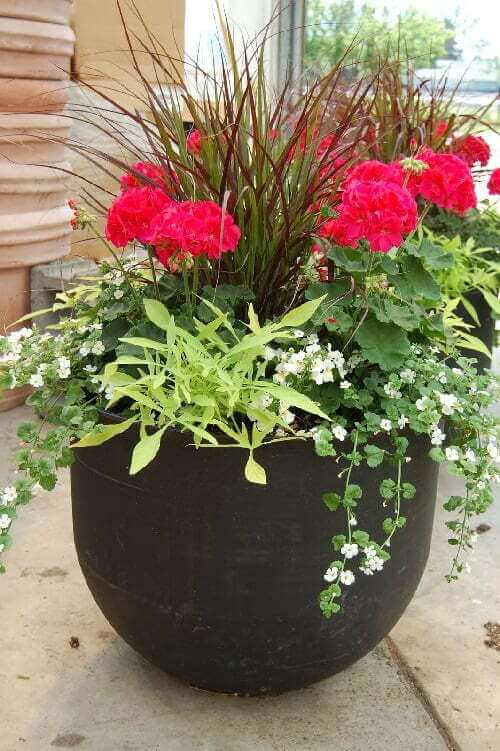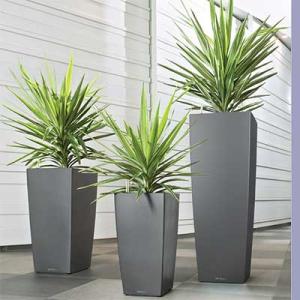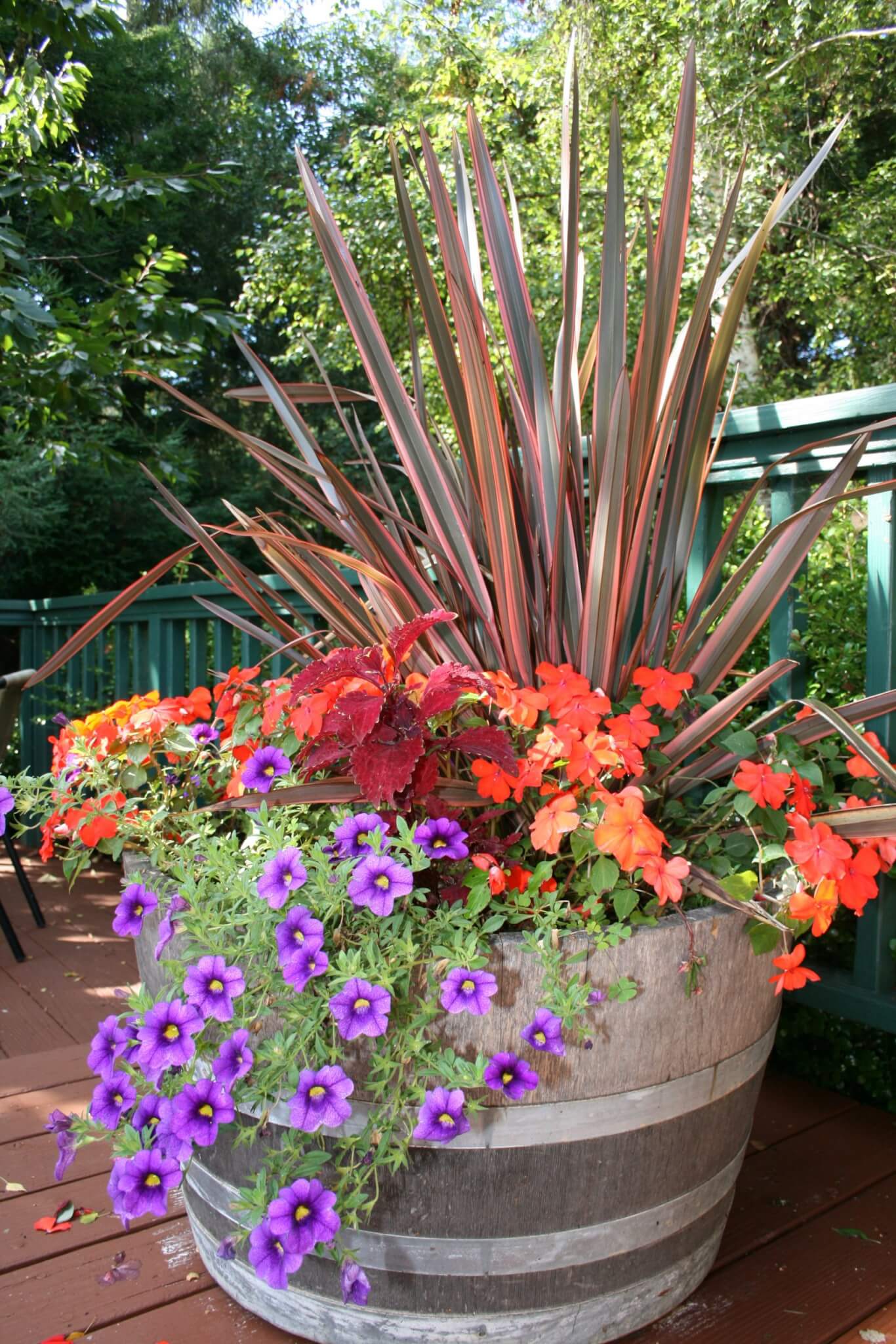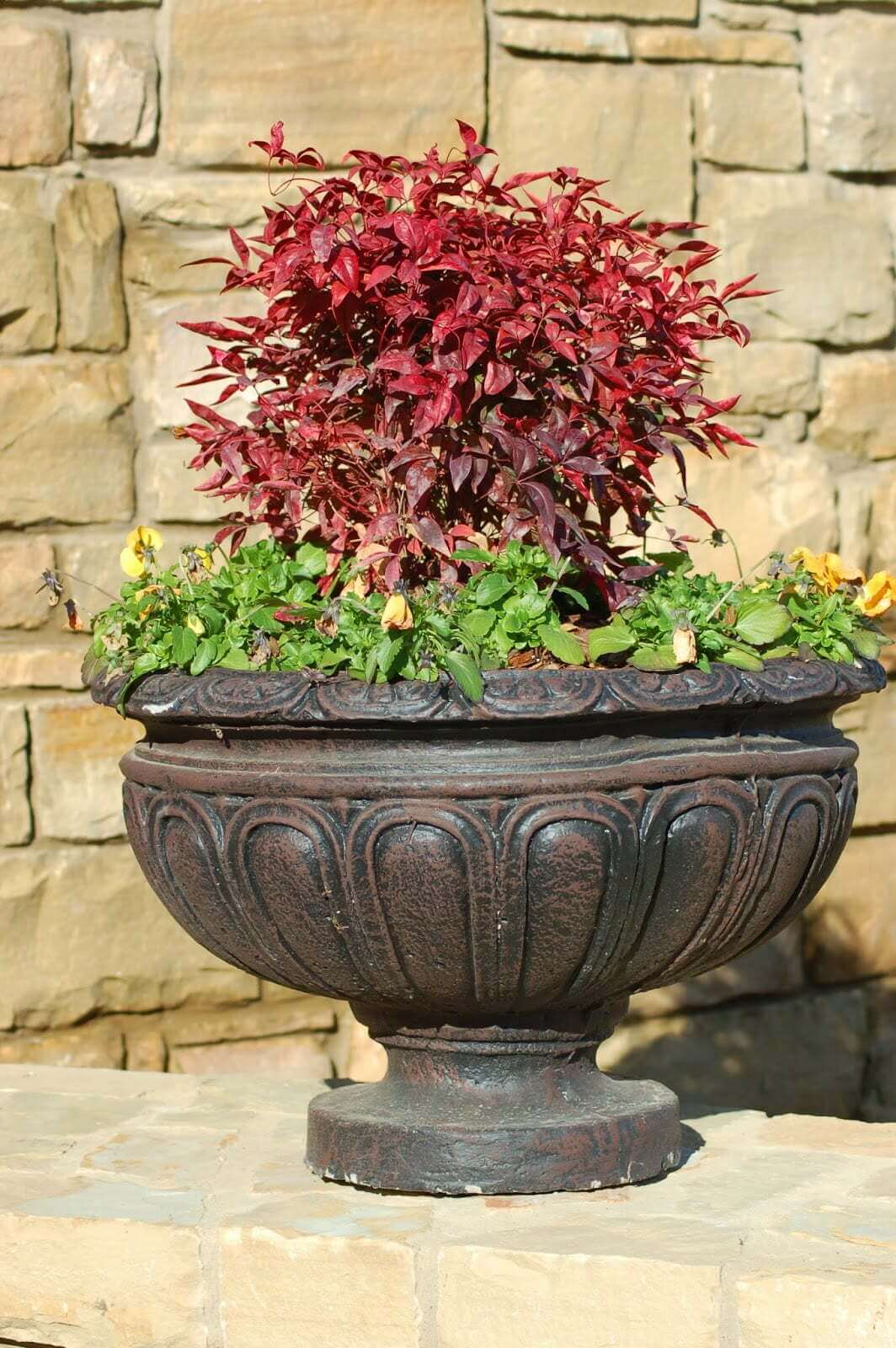Selecting the right plants for pots and containers
Containers can be planted up in various ways for various uses. The plants you select will be determined by the use of the container in the garden and design. Keep the following in mind when selecting plants for your container:
Containers can be used to feature plants, but so can plants be used to feature containers. Simple plants need an attractive container whereas attractive plants need a simple container.
The same applies for the use of containers in a design or garden, the architecture and surroundings can be used to emphasise the container, but so can the container or a grouping of containers be used to complement the surroundings.
Size and Shape of your container
The size of the pot or container should be relevant to the site, and the size of the plant should be relevant to the pot or container. A general rule of thumb is to use plants twice the height of the pot or container and one and a half times as wide as the container. In containers with mixed plantings, it is best to have one taller plant known as the “thriller”, one slightly lower growing plant such as a groundcover or low growing perennial which is known as the “filler” and one trailing or creeping plant which is known as the “spiller”. These are normally arranged from the back to the front of the container starting with the “thriller” and are known as mini or container gardens.
Containers or pots can also be planted with single plants which we call a singular sensation. These are typically plants which best draw attention on their own, due to their form, colour, shape, growth habit and so forth. Singular plants are often also planted to be pruned into attractive shapes and topiaries.
Size and shape are not only important in the plant as a whole, but also in features of the plant such as the size of foliage or flowers relevant to the other plants as well as the container itself and the environment surrounding the container.
Texture and colour
When selecting your plants it is important to compare the textures and colours of the plants to be grouped and planted together. Depending on what you would like to achieve, you could make use of contrasting and matching colours and textures to draw attention or lead the eye to the desired effect.
Select colours and textures which suit each other, the container, and the surrounding architecture and environment.
Remember that colour and texture doesn’t only come from flowers. Foliage, stems, berries and other plant parts can also be used to the desired effect.
Grouping plants in containers:
Remember to group plants with the same water, soil,
light and other environmental conditions together,
this could make a huge difference to the final display.
Keep in mind that plants change in size over time and
that colours will change in and out of seasons.
Group plants together which will look good regardless of
seasonal and growth changes.
As containers are often placed in high traffic areas of a garden or design it is worth choosing plants which aren’t too messy, are relatively slow-growing and have long flowering times.





